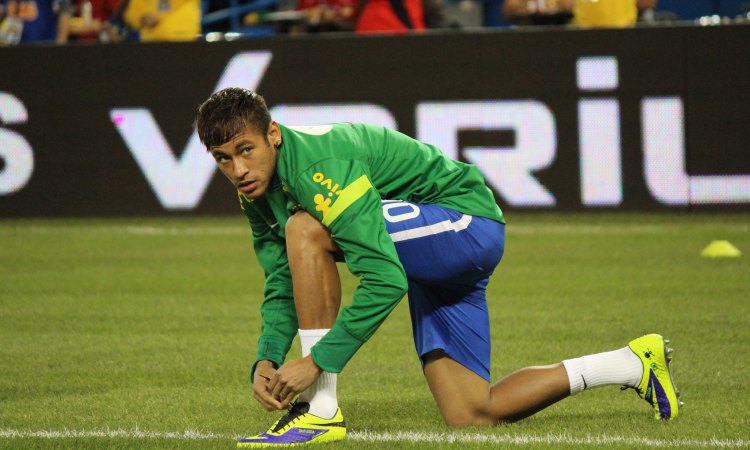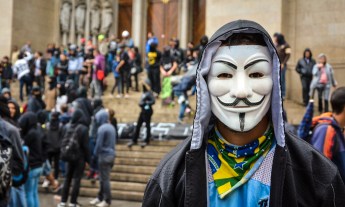
Germany’s 7-1 victory over host country Brazil in the World Cup semi-finals this week followed the injury of Brazilian soccer star Neymar da Silva Santos Júnior, whose collision with Colombian player Juan Camilo Zúñiga during the quarter-final game led to a hail of racist epithets aimed at Zúñiga. Ready to go beyond the headlines? 5 primary sources worth reading next.
Source: “Not black, not white: just the opposite. Culture, race and national identity in Brazil,” Lilia Moritz Schwarcz, Centre for Brazilian Studies, University of Oxford, 2003. Why you should read this: In 1976, researchers conducted a national population survey in Brazil that asked people to self-describe their “color.” They got 136 different responses, including “cinnamon,” “lilac” and “sea blue.” To read every fascinating one of them, check out this working paper. Source: “The whitening Of Neymar: How color is lived in Brazil,” Achal Prabhala, Deadspin, July 8, 2014. Why you should read this: The 2014 World Cup was supposed to be racism-free. After all, host country Brazil is known for its racial diversity both on the soccer field and off … right? Of course, the reality is far more complicated, as this article illustrates via photos of Neymar. Excerpt: “You could conclude that race doesn’t exist in Brazil, which is the favorite line of a specific tribe of Brazilians — impeccable liberals all, who just happen to be upper-class, white, and at the top of the heap. Or you could conclude that everyone in Brazil is indeed mixed — which is, incidentally, the second-favorite line of the selfsame tribe … There is this: When asked if he had ever been a victim of racism, [Neymar] said, “Never. Neither inside nor outside the field. Because I’m not black, right?” Actually, the word he used was preto, which is significant, since, in Brazil, when used as a color ascribed to people — rather than things, like rice or beans — it is the rough equivalent of the n-word, negro and negra being the acceptable ways of describing someone who is truly black (and moreno or morena being standard descriptors for someone dark-skinned, as well as, occasionally, euphemisms for blackness). Technically speaking, however, his logic was faultless — and even kind of interestingly honest: The Neymar who made that statement was an unworldly 18-year-old who had never lived outside Brazil. And in Brazil, Neymar is not black.” Source: “Black identity and racism collide in Brazil,” Dion Rabouin, The Root, June 17, 2014. Why you should read this: Slavery in Brazil wasn’t abolished until 1888. By then, 4 million people of African descent were living in Brazil. While U.S. post-slavery laws segregated black and white communities, Brazil encouraged the integration and mixing of African and European families instead. Today, the country’s urban neighborhoods are still somewhat divided by class and race, but multiracial heritage is also the norm — and multiracial racism is anything but black and white. This article in The Root, a leading news and culture site for African-American influencers, explains Brazil’s race issues to a U.S. audience. Excerpt: “Brazil has a complex past and present when it comes to race. That complexity can perhaps best be illustrated by the fact that many black Brazilians don’t think of themselves as black. Brazilian soccer star Neymar is a great example … This denial of blackness may seem confusing to many Americans, because despite his long, straightened and occasionally blond hair, Neymar is clearly black. (Take a look at a picture of young Neymar with his family.) But for Brazilians, being black is very different from what it is in the United States … Integration and miscegenation were actually government policy in Brazil. Around the time that slaves were freed, in 1888, the government sought to whiten its population through the importation of European immigrants. This idea was made law by Decree 528 in 1890 and opened the country’s borders to foreign immigrants, except for those from Africa and Asia.” Source: “Inter-relations: Brazilian soccer and society,” Luiz Costa-Lima, professor of Comparative Literature in Universidade do estado do Rio de Janeiro, 1998. Why you should read this: For half a century after soccer was brought to Brazil from England in the late 1800s, Brazilian soccer teams were primarily white and wealthy. This academic paper explores the legacy of “social whiteness” in Brazilian soccer. Excerpt: “The initial phase of soccer in Brazil has been characterized as a practice confined to the descendants of upper-class native families and well-established foreigners, usually Englishmen. Since Brazilian society officially ignored racial discrimination … the initial predominance of white players in Brazilian soccer stemmed from social criteria.” Source: “Race in another America: The significance of skin color in Brazil,” Edward E. Telles, Princeton University Press, June 30, 2004. Why you should read this: For one of the most frequently cited scholarly works on racism in Brazil, read this book. Excerpt: “While a history of blatant and legal racism has undoubtedly contributed to making race an important area of study in the United States, racism in Brazil has generally been more subtle, and legal racial segregation has not existed since slavery. Indeed, the dominant assumption from Du Bois’ time until recent years has been that race does not really matter in Brazil…While it is becoming increasingly clear that racism is a universal phenomenon, it is less accepted that its manifestations may vary widely. Are the nature and levels of racial inequalities the same? Surely, history, politics, class structure, culture, and ideology are very distinct between the Brazil and the United States. Should these not have also affected the development of a distinct system of race relations?” + How the World Cup can make or break Brazil’s hopes for the future: Misha Glenny on the country that’ll host TEDGlobal 2014: [youtube https://www.youtube.com/watch?v=z-yzTSrjkxc&w=560&h=315%5D Featured image by Amil Delic/Flickr.











